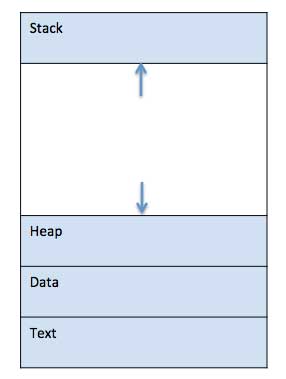rocess
A process is basically a program in execution. The execution of a process must progress in a sequential fashion.
To put it in simple terms, we write our computer programs in a text file and when we execute this program, it becomes a process which performs all the tasks mentioned in the program.
When a program is loaded into the memory and it becomes a process, it can be divided into four sections ─ stack, heap, text and data. The following image shows a simplified layout of a process inside main memory −

The process costing has the following features.
1. The production is carried on continuously and passing two or more processes.
2. Only homogeneous products are produced.
3. The production will be stopped if the plant and machinery is shut down for repairs.
4. The management has clearly defined process cost centers and the accumulation of costs such as cost of material, cost of labour and overheads by the cost centre.
5. The accurate accounting records are maintained in process wise as the number of units produced completely, the number of units partly produced and total costs incurred.
6. The finished product of one process becomes the raw material of the next process or operation and so on until the final product is obtained.
7. Some losses may arise in all the processes due to avoidable and unavoidable reasons. Such losses may be normal and/or abnormal.
8. Accounting treatment of normal losses and abnormal losses are studied in this method of costing.
9. Sometimes, abnormal gain is also available in certain processes.
10. Accounting treatment of such abnormal gain is also studied in this method of costing.
11. Sometimes, goods are transferred from the process to next process at transfer price instead of cost price.
12. The transfer price is compared with market price to know the level of efficiency or losses occurring in a particular process.
13. All the input units cannot be converted into finished products in all the processes for a specified period. Some may be in process. At the same time, the calculation of effective unit rate is carried on in this method of costing. Therefore, accurate average cost is obtained.
14. Sometimes, more than one product is produced. All the products are having equal value and importance. If so, these products are called joint product.
15. In certain cases, more than one product is produced. One product has more value and gets more important than others. If so, more value product is main product and less value product is by-product.
16. Main product may not require any further processing. But, by-products may require further processing before they can be sold.
17. Both main product and by-products are valued under this method of costing.
18. Joint cost is apportioned to both main product and by-products on suitable basis.
19. A main product of one firm may be a by-product of another firm.
20. Output is uniform. Hence, the cost per unit of production can be ascertained only by averaging the expenditure incurred during a particular period.
21. Work in progress is converted into finished products through the cost of equivalent production.


No comments:
Post a Comment